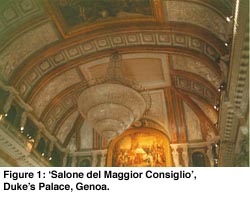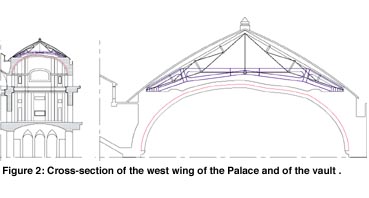


by Maurizio Brocato
The availability of appropriate information is paramount for the conservation of our cultural heritage and for the repair of ancient buildings, especially when structural restoration is needed.
In situ observations give hints on the main causes of health degradation. Sometimes historical analyses provide architects with fundamental, though qualitative, answers on the origin and evolution of the observed structural problems. Measurements are usually taken soon before and/or during work to investigate the strengths and weaknesses of an ancient structure, but a record of the structure’s life, with the necessary data stored in a well-structured data base, is most often unavailable. There is currently a real need for a scientific and technical initiative aimed at the design and organization of data acquisition and storage systems for historical buildings and monuments. This activity would be a valuable contribution - per se - for studies on the history of ancient buildings and provide an important tool for architects in the future.


The Firmitas project aims at the development of a set of procedures and knowhow for monitoring the structural health of ancient buildings. This is a multidisciplinary activity calling not only on architecture, history, civil and electronic engineering, but also on more fundamental scientific disciplines such as physics, mechanics, mathematics, and computer science.
In addition to the standard approach to the problem of structural health monitoring (sensing and processing information on the effects of loads and temperature), less well known issues are tackled, such as the study and monitoring of bio-mechanical interactions and the reduction of damage and collapse risks through implementation of mechanical control systems.
Thanks to the financial support of the European Social Fund (through the Italian Ministry for the Universities and Scientific and Technical Research) and of the Province of Messina, a group of nine graduate students is currently working on this project at IEI-CNR in Pisa. The activity of the group is organized into four sectors: architectural and historical analysis, mechanics of materials and structures, numerical computations, data acquisition and process. Two ‘pilot’ examples have been chosen to focus on concrete issues: the vault of the ‘Salone del Maggior Consiglio’ in the Palazzo Ducale in Genoa, and the Monastery of San Placido Calonerò in Messina.
The first structure dates from 1778 and, due to construction problems, which were already evident at the time of building, has had to be restored many times since then. The vault spans a surface of 17 by 35 meters and suffers from a localised distortion of curvature (see figures). A system of health monitoring is currently in operation. With the permission of the Ente Palazzo Ducale, and thanks to information provided by them and by the Superintendency for Cultural Wealth of Genova, we are now investigating possible extensions to the existing monitoring system, in particular through an improved analysis that also takes hygro-thermal effects and damage to the masonry into consideration.
The Monastery of San Placido Calonerò, built during the Norman period in Sicily, is situated on the hills above the town of Messina. The Province of Messina has encouraged us to design a health monitoring system for the monument. The main structural problems are caused by differential foundation displacements and loss of resistance due to moisture. There have been many architectural modifications, including the rebuilding of parts, in the past, and the compatibility between old and new materials within the structure needs to be verified. As the seismic risk of the site is very high, tools for the evaluation of the possible consequences of earthquakes and a data base on the local magnification or attenuation of seismic waves must also be designed.
Links:
FIRMITAS: http://www.iei.pi.cnr.it/~firmitas
Please contact:
Maurizio Brocato - IEI-CNR
Tel: +39 050 315 3139
E-mail: brocato@iei.pi.cnr.it